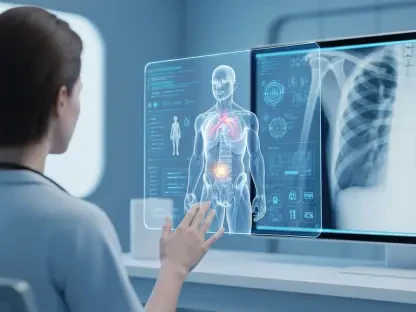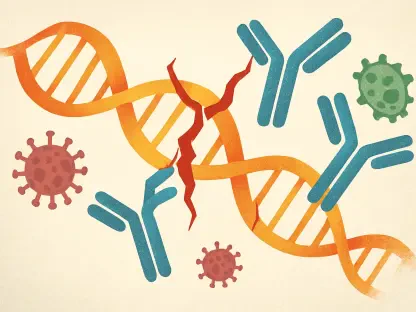The transformative impact of technology on public health initiatives and personal health management is undeniable. Advanced tools such as artificial intelligence (AI), big data analytics, wearable devices, and telemedicine are now pivotal in tracking disease outbreaks, personalized health monitoring, and enhancing public health strategies. These technological advancements have redefined traditional approaches to health challenges, making technology an indispensable component of modern public health. By leveraging these tools, healthcare professionals can respond to health emergencies more effectively, improve disease prevention efforts, and empower individuals to take charge of their health.
Role of Technology in Public Health
Technology has profoundly influenced public health by providing tools like AI, big data, and health informatics. These tools help in tracking disease patterns, identifying high-risk groups, and planning targeted interventions. During health emergencies, such as pandemics, technology’s role becomes even more critical, enabling the use of predictive modeling and digital surveillance systems to foster timely and effective responses. For example, AI algorithms can analyze vast amounts of data to predict outbreaks and direct resources to areas needing immediate attention, thereby enhancing the efficiency and effectiveness of public health initiatives.
Public health professionals must incorporate technology into their strategies, making advanced education essential for keeping up with technological advancements. Online Public Health Masters programs are highlighted as a flexible and practical means for professionals to gain the necessary specialized skills while continuing their current work. These programs offer courses in epidemiology, health informatics, and data analysis, equipping public health workers with the knowledge to integrate cutting-edge technology into their practice. By staying current with technological advancements, public health professionals can lead more proactive and informed disease prevention and control efforts, ultimately benefiting communities worldwide.
Technological Advancements in Disease Prevention and Control
The use of predictive analytics and AI has revolutionized disease prevention and control. Real-time data collection and analysis during outbreaks facilitate the tracking of infectious diseases and the implementation of timely interventions. This capability is particularly crucial in our increasingly interconnected world, where global travel and urbanization heighten the risk of disease transmission. For instance, during COVID-19, AI-driven models were employed to predict the spread of the virus, allowing health authorities to take preemptive measures and allocate resources more efficiently.
Beyond mere monitoring, technological innovations are enhancing vaccination campaigns and public health education. Digital platforms raise awareness about preventive measures and foster community participation in health initiatives. Mobile health apps and text-based alerts provide information on vaccine availability, hygiene practices, and other health updates, making disease prevention efforts more efficient and accessible. These tools contribute to creating healthier communities by reinforcing the importance of preventive care. For example, apps can remind individuals of vaccination schedules, track their health status, and recommend actions to mitigate the risk of disease, thereby playing a crucial role in maintaining public health.
Digital Health Tools
Digital health tools are revolutionizing personal health management. Wearable devices like fitness trackers and smartwatches provide real-time data on physical activity, heart rate, and sleep patterns. Mobile apps assist users in monitoring their diets, setting fitness goals, and tracking their progress. With this information at their fingertips, individuals can make informed decisions about their health and lifestyle. Telemedicine platforms have made healthcare more accessible by enabling remote consultations with doctors, allowing patients to receive medical advice without leaving their homes. This is particularly beneficial for those in rural or underserved areas who might not have easy access to healthcare facilities.
As technology advances, digital health tools become more sophisticated. AI-powered apps offer personalized health recommendations, and advanced wearables can detect early signs of illness. Such innovations simplify the management of chronic conditions, reduce healthcare costs, and improve individuals’ quality of life. For instance, AI algorithms can analyze data from wearables to detect irregularities in heart rhythms, enabling early intervention and potentially saving lives. By offering tailored health advice and facilitating continuous monitoring, these advanced tools lay the foundation for more proactive and personalized healthcare, allowing individuals to maintain better health and manage diseases more effectively.
Building Technological Equity in Health
Despite the many advancements, technological equity remains a significant challenge. Communities in rural or underserved areas often lack reliable internet, making the use of telehealth or digital health tools difficult. Additionally, economically disadvantaged populations face further hurdles in affording smart devices or accessing digital health platforms. These barriers can exacerbate health disparities, excluding many from the benefits of modern healthcare. For example, a lack of internet access might prevent individuals from participating in telemedicine appointments or utilizing online health resources, leading to unmet healthcare needs.
To address these disparities, initiatives aimed at increasing accessibility are crucial. Expanding broadband connectivity, offering subsidized health technologies, and establishing community telehealth hubs are steps toward greater inclusivity. Collaborative efforts between governments, non-profits, and the private sector can help make technology-driven healthcare more accessible. Programs that provide affordable or free smart devices and internet access to low-income families can bridge the digital divide, ensuring everyone has the opportunity to benefit from health innovations. These initiatives not only improve access to healthcare but also empower individuals to manage their health effectively and equitably.
Empowering Communities Through Technological Literacy
Access to technology alone is insufficient if individuals lack the necessary skills to use it effectively. Many people, especially older adults and those with limited education, struggle with digital health tools, leading to the underutilization of valuable resources like health apps, telemedicine platforms, and wearable devices. Without proper guidance, these technologies can become sources of frustration rather than empowerment. For instance, seniors may find it challenging to navigate the user interfaces of health apps, resulting in missed opportunities for health monitoring and management.
Community-focused programs that promote technological literacy can bridge this gap. Public health professionals and educators are essential in creating workshops and user-friendly guides tailored to diverse populations. Such initiatives help individuals build confidence in using technology for personal health management. By offering hands-on training and support, these programs enable users to understand the benefits and functionalities of digital health tools, ultimately leading to better health outcomes. As people become more tech-savvy, they are better equipped to engage with health innovations and take proactive steps in managing their wellness, thereby improving their overall quality of life.
Collaborative Efforts for a Balanced Approach
Achieving a balance between technological innovation and accessibility is essential. Collaborative efforts among public health professionals, developers, and policymakers are necessary to create solutions that are practical, ethical, and adaptable. Ensuring that these innovations are user-friendly and widely available should be a shared priority. For example, developers can work alongside healthcare providers to design intuitive health apps, while policymakers can establish regulations that protect users’ data privacy and promote equitable access to digital health tools.
Successful collaborations include partnerships between tech companies and healthcare organizations to develop affordable and intuitive tools. Policymakers can support these efforts by introducing regulations that safeguard data privacy and promote equitable access. Such collaborative frameworks encourage a balanced approach where technology benefits all communities rather than leaving some behind. By fostering a culture of inclusivity and innovation, stakeholders can ensure that technological advancements in health are accessible to everyone, thus enhancing public and personal health outcomes across diverse populations.
Conclusion
The impact of technology on public health and personal health management is profound and undeniable. Cutting-edge tools like artificial intelligence (AI), big data analytics, wearable devices, and telemedicine have become crucial in monitoring disease outbreaks, offering personalized health tracking, and enhancing public health strategies. These technological advancements have revolutionized traditional approaches to health challenges, making tech an essential part of modern public health initiatives. With these tools, healthcare professionals can respond to health emergencies more efficiently, improve disease prevention efforts, and empower individuals to manage their health proactively.
Technology has redefined the ways we handle public health issues. For instance, AI can predict disease spread, big data can identify at-risk populations, wearables can monitor vital signs in real time, and telemedicine provides remote access to healthcare. These innovations enable a more responsive, data-driven approach to health crises and daily health management. By integrating these technologies, we can enhance the effectiveness of public health interventions and enable people to lead healthier lives through timely, personalized care.









